Path to Progressive Judaism
By Dr Ed Kessler, Path to Progressive Judaism Advisory Board Chair

By Dr Ed Kessler, Path to Progressive Judaism Advisory Board Chair
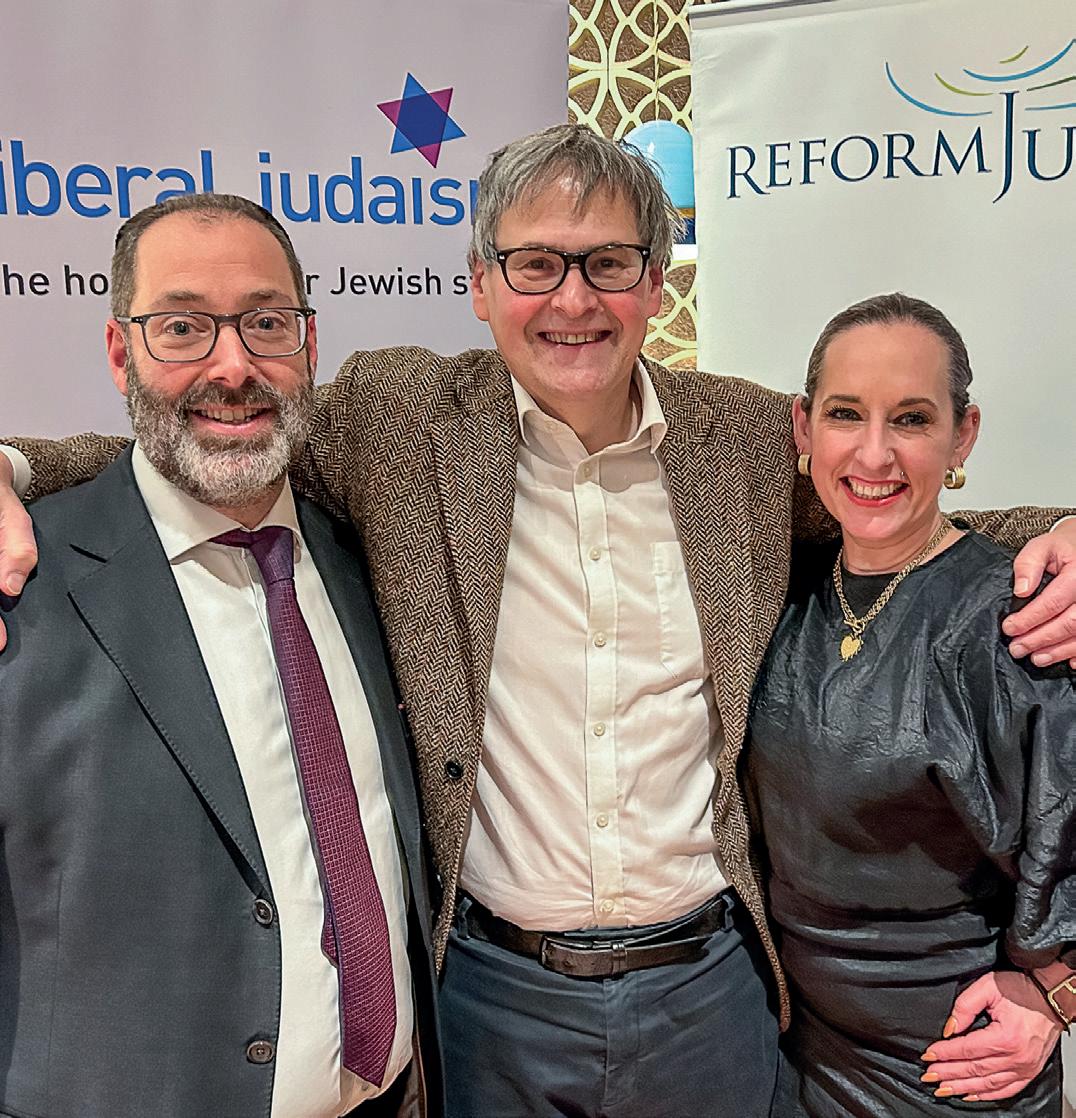
The coming together of the Movement for Reform Judaism and Liberal Judaism into one single movement is the most significant development in British Judaism of the last 80 years.
Our voice, as Progressive Jews, will be heard not only in the UK, but around the world.
Our Judaism – one that is inclusive, musical, thoughtful, creative and egalitarian – will flourish and grow, helping more people in more places enjoy rich and vibrant Jewish lives.
This is an amazing opportunity… and it is being embraced by our 80+ Liberal and Reform communities, and tens of thousands of members, all across the UK and Ireland.
As Chair of the Advisory Board – the body containing members of both Liberal and Reform Judaism that serves as a forum for discussion and feedback – I have seen the vision for our new movement developing first hand.
But we also know that many of you still have questions about the process itself.
This booklet seeks to answer these questions by describing all the wonderful things currently happening as our movements and clergy bodies begin to work together. This includes setting out the practical tasks around the merging of two organisations into one and looking ahead to our exciting future.
I would like to end by thanking everyone who has contributed to this journey, especially our movement CEOs, Rabbis Josh and Charley, Chairs Karen and Paul and all the members of our Advisory Board and clergy bodies.
By Sarita Robinson, MRJ Director of Community Partnership and Alexandra Gellnick, LJ Director of Development and Membership
In April 2023, when the Movement for Reform Judaism and Liberal Judaism announced our plans to unite into one single Progressive movement, it opened many new opportunities for our synagogues and our members.
Almost immediately, Reform communities were invited to be part of existing Liberal events and initiatives and vice versa. As those were proving a huge success, we began to work on the creation of brand new joint programming too.
An early achievement was when the Northern Network – the group of Reform communities and clergy in the North of England and Scotland –invited Liberal congregations to join.
It has proved a huge positive, not just for the Liberal communities now benefiting from the sharing of best practice and development support, but also the existing Northern Network being joined by new faces and ideas.
Indeed, it has been so successful that one of our first joint projects has been the creation of the new South West Network – based on the same model. Watch this space for South West Progressive Chagigah (a weekend of learning, relaxation and prayer), which will mirror MRJ’s long-held Northern Chagigah.
Education, both internal and external, is something else that has greatly benefitted from the added resources and ideas that come from working in collaboration.
Teacher training, an annual education conference, safeguarding sessions, and upcoming joint classes and discussion groups all bring huge benefits to our communities and are made possible by our partnership.
In schools, especially those with few or no Jewish pupils, it’s important that when children learn about Judaism, they learn about our entire community – not just the practices and policies of Orthodox Judaism.
That is why, supported by the Board of Deputies, we have started a joint network of school visit volunteers

Standing united at a vigil for the hostages
– providing them with the training and tools they need to teach pupils about the true diversity of the Jewish community and the variety of ways we live our lives as Jews today.
Our members and congregations come together as Progressive blocs at communal events. These have included the important work of calling for the return of the hostages, and celebratory events such as when our communities won a number of Mitzvah Day Awards.
Liberal communities have benefitted from the HR support that those in the Movement for Reform Judaism already enjoy. This has included safer recruitment training, a monthly meeting for synagogue HR administrators, and the opportunities to promote job vacancies through all our movement channels.
The Liberal Judaism Open House – an informal and relaxed online meeting space where members could chat with Liberal CEO Rabbi Charley Baginksy – has been rebranded and expanded. It’s now just called Open House, and we are delighted that Reform CEO Rabbi Josh Levy has joined, giving members the opportunity to chat to both Progressive Co-Leads as well as getting to know, and build friendships with, other Progressive Jews from all over the UK.
Likewise, the Reform monthly leadership check-ins are now joint check-ins. Aimed at those in leadership positions within their communities, they offer the chance to learn from each other, share ideas, problem solve and look at areas of future collaboration and cooperation.
These are just a few of the examples of the ways we are already working together as two organisations in collaboration. We are looking forward to seeing all that is possible when we are one united movement.
By Karen Newman, Chair of Liberal Judaism and Paul Langsford, Chair of the Movement for Reform Judaism
It has been nearly a year since the full-time process of bringing our two organisations together began. We want to recognise how much work has been done in this time and the significant milestones we have achieved.
As we reach the end of this first year, this is an opportunity to reflect on, and share, what has taken place.
When the work began, we decided to prioritise three areas.
The ‘in principle’ conversation with our communities
Communities are at the heart of our movements, so the most important first step was to discuss with them the creation of one Progressive movement. Our CEOs have spent much of the last 12 months on the road speaking with communities about this goal, which they write about elsewhere in this booklet.
Everything we have done has been with the recognition that, as member organisations, the voice of our members is crucial. We have sought to move fast enough to ensure that we keep momentum and do not paralyse the work of movement, while at the same time moving slowly enough to ensure that we travel together. This has been a wonderful journey and one which needed an investment of time.

.
Alongside the ‘in principle’ conversation about the process, we recognised that we also needed to work on what the new movement would look like. In particular, there were three foundational areas that we needed to explore without which the creation of a new movement could not take place. Three groups were established to make recommendations on these areas. In summary:
a) Financial contributions: We are committed to ensuring that, for the first three years of the new movement, this should not cost communities more than would be the case under current models. This will require us to raise funds in other ways, and we are committed to greater fundraising and exploring new income streams. Once the new movement has been created, we will have the opportunity to look together at future modelling.
b) Governance: The group looking at this saw that the core principles of governance in both movements were very similar. Over the coming weeks we will begin to draw up governing documents based on their recommendations, that reflect the centrality of community voice, while ensuring that the trustees of the new charity are accountable and responsible for the new movement.
c) Membership agreement: Good practice in the charity sector requires that membership organisations have membership agreements for the protection of all parties. The group looking at this recommended that the agreement for the new movement be ‘light touch’, and provide an opportunity for a clear articulation of the benefits and responsibilities of membership.
3
In order to ensure that the two movements remain effective, we have begun to model our new working practices, already putting in place a partial operational coming together. We have a shared communications team, are building a shared youth and student infrastructure and new recruitments are being made together. Wherever we can, we are beginning to collaborate and share more. Our two staff teams meet weekly and our programmes are being shared across both movements.
Additionally we continue to work together on shared interests like Leo Baeck College; where we have a mutual commitment to an independent academic institution training a new generation of rabbis for UK communities.
As the chairs of the two existing movements, we have been impressed by the difference this initial coming together has already made internally and externally.
Externally, there is a greater recognition of the central place of Progressive Jewish life within the UK Jewish community and the national discourse of this country. Too often in the past there were tables where we were not present, or sometimes did not even know existed. We are now beginning to be recognised as having an important role to play in lifting up the values and voices of a diverse and pluralistic Jewish community.
Alongside this we have seen first-hand the difference that sharing resources and experience has for our communities. It has been a privilege to witness new conversations between communities, where new ways of sharing resources are being conceived. The possibilities that lie before us are exciting and inspiring.
There is still a long way to go, and we recognise that the final decision is in the hands of our member synagogues. Nevertheless we want to recognise how far we have come and how much has already been achieved by a commitment to work together differently.
By Rabbi Robyn Ashworth-Steen and Rabbi Kath Vardi, Co-Chairs of the Assembly of Reform Rabbis and Cantors and Rabbi Alexandra Wright and Rabbi Anna Wolfson, Co-Chairs of the Conference of Liberal Rabbis and Cantors
Eilu v’eilu – ‘Both these and these are the words of God’
It has been an exciting time for the four of us to become Co-Chairs of the clergy bodies of Reform and Liberal Judaism, working in partnership together – as well as with our two Batei Din and the national movements.
The theme for us has been building strong, honest and brave spaces within the Assembly and Conference and in the relationships we hold with all of our partner groups.
Within the Conference and Assembly, we have been creating supportive structures that hold a multiplicity of voices and opinions to recognise the breadth and energy of the rabbinate and cantorate and to acknowledge the value in deep conversations.
Given the challenges faced by communities and their leaders – especially following the pandemic and 7th October attacks – we have been ensuring that we create supportive and nurturing spaces for cantors and rabbis to come together.
We also understand the role the Assembly and Conference have in representing clergy in the work they do, their work conditions and the changing face of the rabbinate/cantorate today.
We have started to hold many of our monthly meetings together. Being in one space with Progressive colleagues from across the country has meant our meetings have been full of excitement and potential.
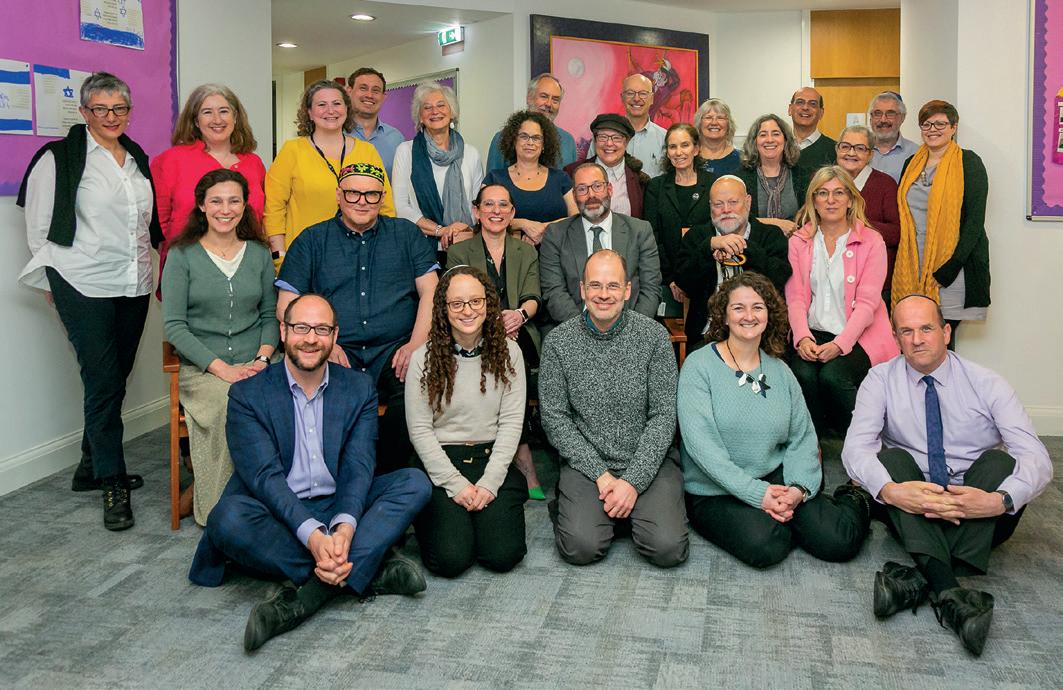

rabbis and cantors of Reform and Liberal Judaism
Being together has enabled us to start our main project: New Thinking for a New Movement.
We have spent two half days focusing on questions of ideology and theology for today’s world. At our last meeting we asked ourselves the following questions:
1. What do we believe the role and authority of clergy ought to be in the new movement, if it is to be as dynamic and successful as we hope and dream?
2. What does it mean to be a Progressive Jew today? What are we progressing to/from?
3. My deepest dilemma regarding Israel is... and the implications for Progressive Judaism today are…?
4. What is the place for God in the new movement?
One main takeaway has been the commitment of clergy to be brave in stating what it means to be a Progressive Jew today, as well as ensuring that we amplify and embrace the multi-vocality of our Judaisms from both communities and clergy: Eilu v’eilu.
We are looking forward to opening up these conversations in the next few months.
Another focus has been working towards the new landscape of a new movement. We have already started work on hearing from our Batei Din (Liberal and Reform) and can see how much we have in common in process. Together with the Convenors of the Batei Din we will continue to work on how the new movement will affect our Batei Din.
Shortly we will also begin to discuss the options before us and the possibility of being one clergy movement. There is much work to do and a great deal of potential.
By Rabbi Charley Baginsky and Rabbi Josh Levy, Co-Leads of Progressive Judaism
We have travelled thousands of miles and we have drunk a terrifying amount of coffee.
It has been amazing to be welcomed into communities and to hear first-hand from our membership what really matters to you about movement and its relationship with your community.
While every community is different there are some common themes that we have heard around the country: The first is that ‘Movement Matters’.
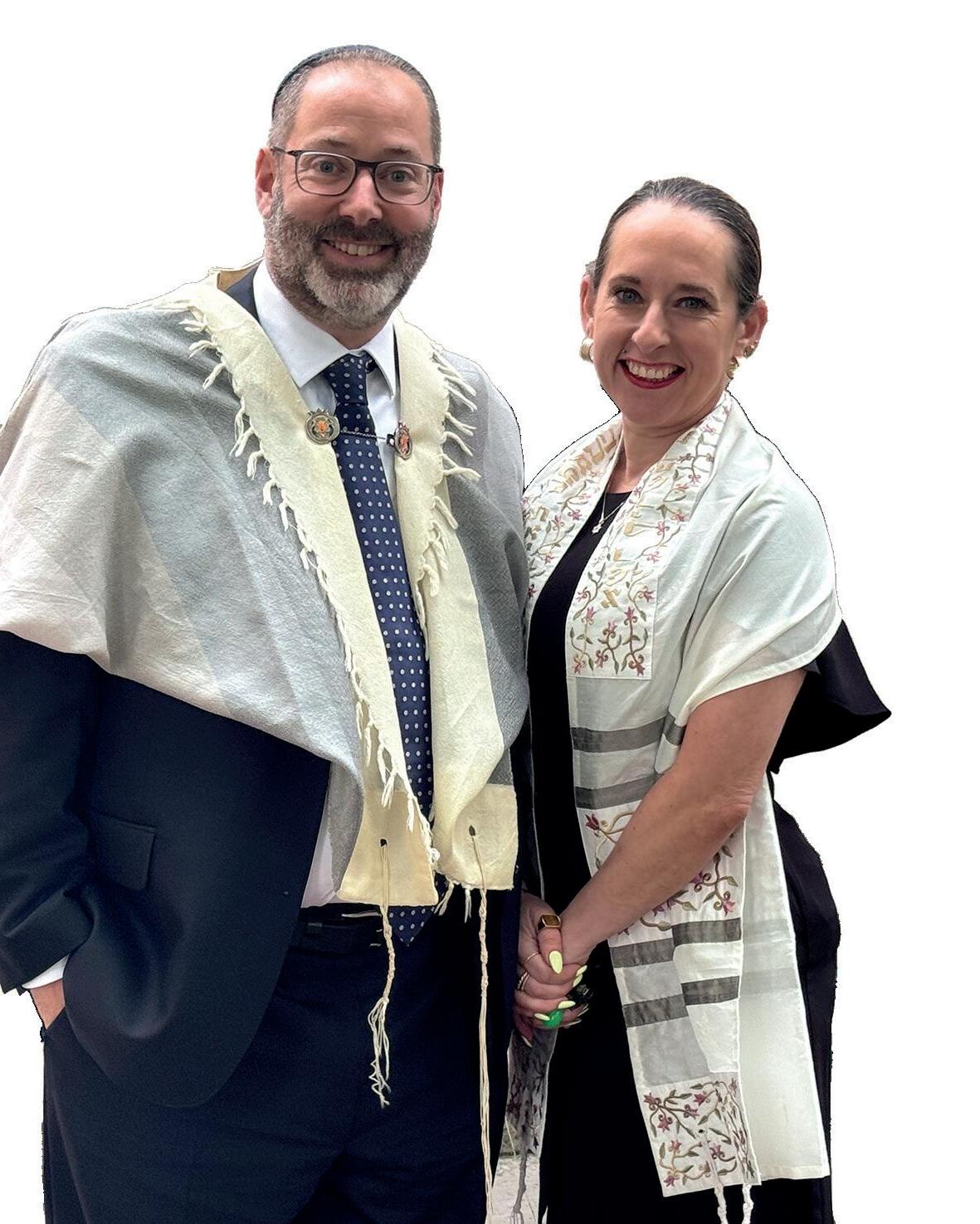
This is something that we hoped would be true, but not something we took for granted. We have been overwhelmed with how clearly it has been articulated. There is a strong desire to see an effective movement working on behalf of communities and members, and a recognition that it is essential that we amplify our voice.
We have heard very clearly that there are certain things that we can only do or do better when we do them together. There is a shared sense of the core work of movements - be that outreach, students and young people, voice and representation - and also a clear sense of what movement is not for. It is not there to dictate community traditions or sense of self, it is not there to choose a community’s name or focus.
We have seen how vital movement is to our smaller communities, providing services and resources and an ear, but we have also seen how vital it is to our larger communities – representing them on the national stage or facilitating the Beit Din or looking after their students when they are away from home.
Movement must support and uplift the things that make communities special. In each community, we encounter a keen sense of individuality, culture and offerings, and hear why that is important to
Rabbi Josh Levy & Rabbi Charley Baginsky






the members of that community. This needs to be celebrated and shared. Movement has a specific role in protecting and celebrating our diversity because it is what gives us our strength and beauty.
Movement is not about imposing uniformity on community culture. At the same time, we need to have shared behaviours to protect one another – the role of movement is to support this. To achieve this, we know we must be deeply in relationship with communities, so this journey of engagement needs to be just the start.
We have also heard that movement needs to be effective and cost effective. It has to be focussed and accountable, clear about what it is trying to deliver and much better at communicating with communities about successes and challenges. It is important that there is clear and measurable benefit
for membership. To be considered a success, the coming together should achieve these things.
This has been a vital time - listening to all the questions and the possibilities. When discussing the building of the new movement, we have been pleased that the questions we have been asked have been ones of ‘how’ and ‘when’ and not ‘whether’, from a shared position of ambition and passion for Progressive Jewish life.
The coming together is not just possible but it is the preference.
We can embrace the diversity of practice that exists within our movements, and build a new organisation that reflects our ambition for our voice and Progressive Jewish life in the UK.
By Simon Rothstein and Graham Miller, Progressive Judaism Comms Team
From the day we sent the press release announcing that Liberal Judaism and the Movement for Reform Judaism were uniting, it became clear that together we are more than the sum of our parts.
One of our first decisions was to merge our communications – working as one team to raise the voice of our communities, our clergy, our leadership and, above all, our Judaism.
Our workload has increased exponentially with regular coverage from the BBC, Guardian and Times – as well as a further increase in presence and prominence in the Jewish Chronicle and Jewish News.
That’s because one movement representing 1/3 of all synagogue affiliated Jews is a much more powerful pitch than two smaller, separate but very similar organisations.
The other huge benefit we have is 80+ communities and a group of dedicated clergy all achieving some wonderful, and very newsworthy, things.
Our messaging has also become much clearer – designed not to be about press coverage for its own sake, but to truly show what Progressive Judaism can offer individuals, families, local communities and wider society.
On these pages you will find a small sample of the coverage that, together, we have all achieved.




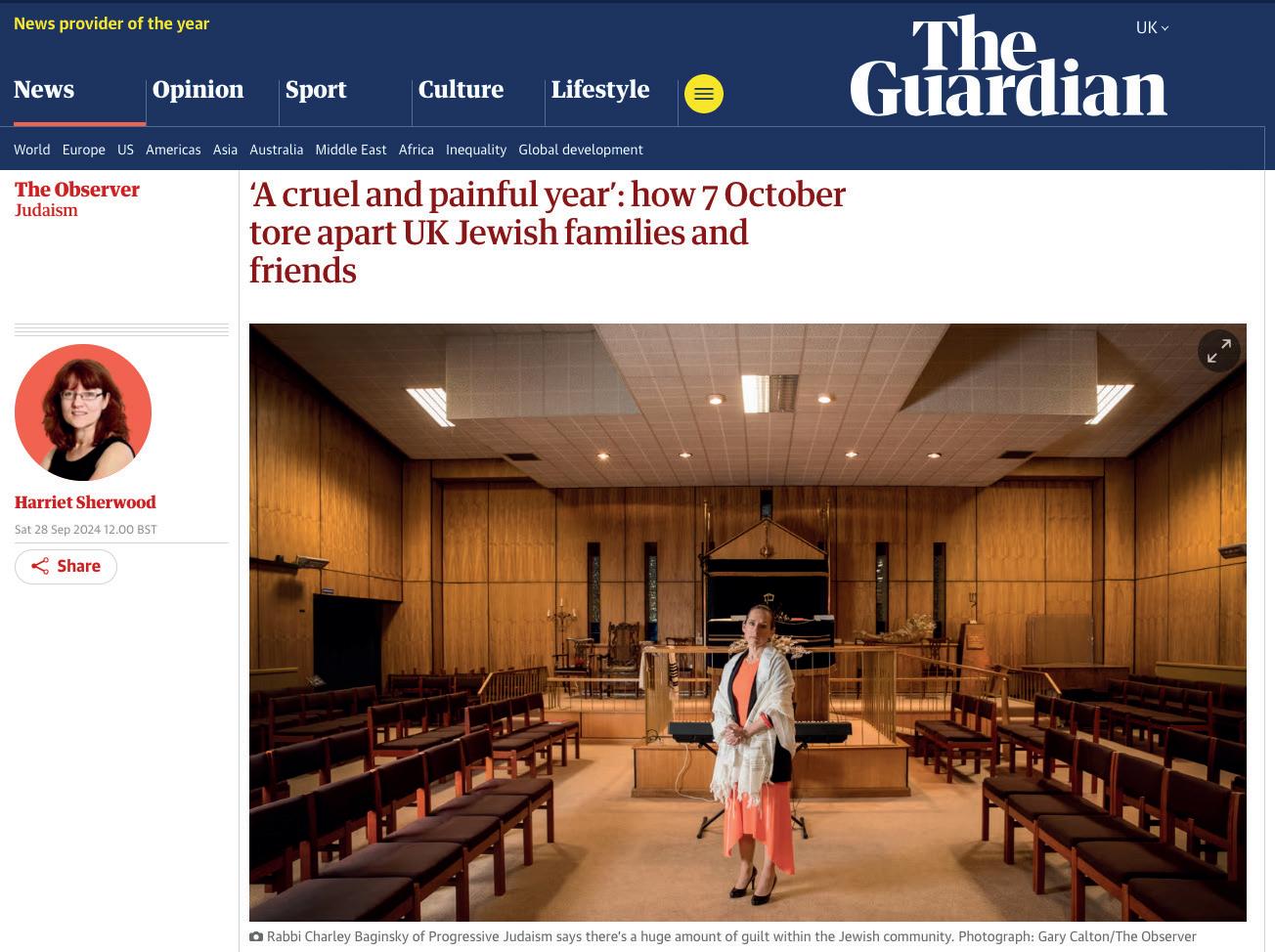


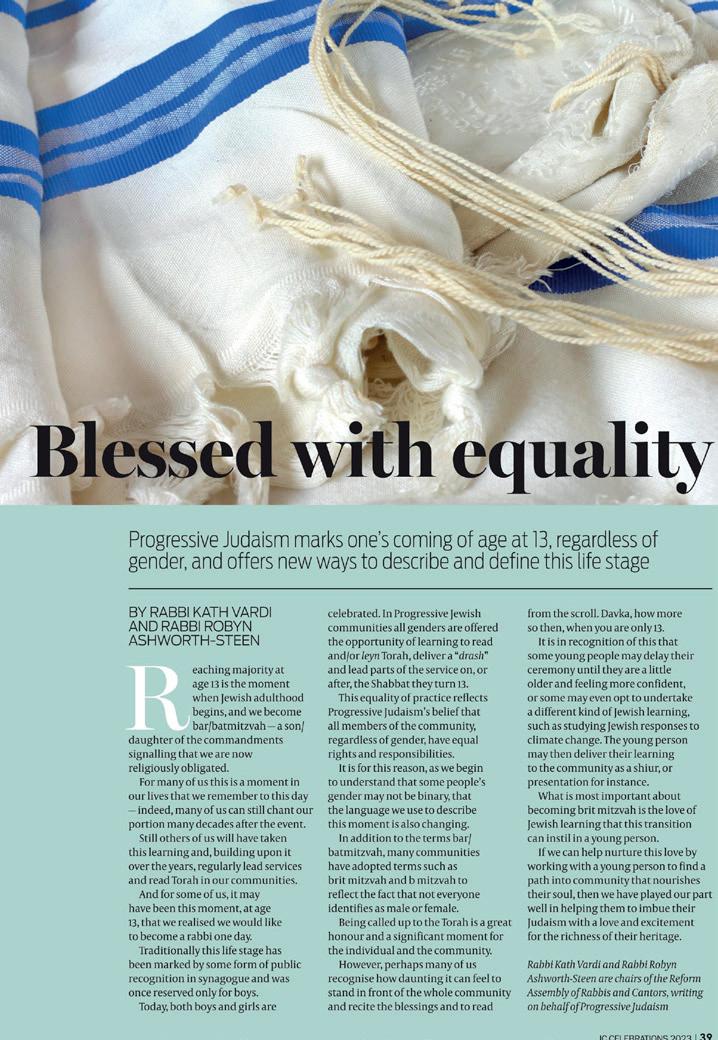









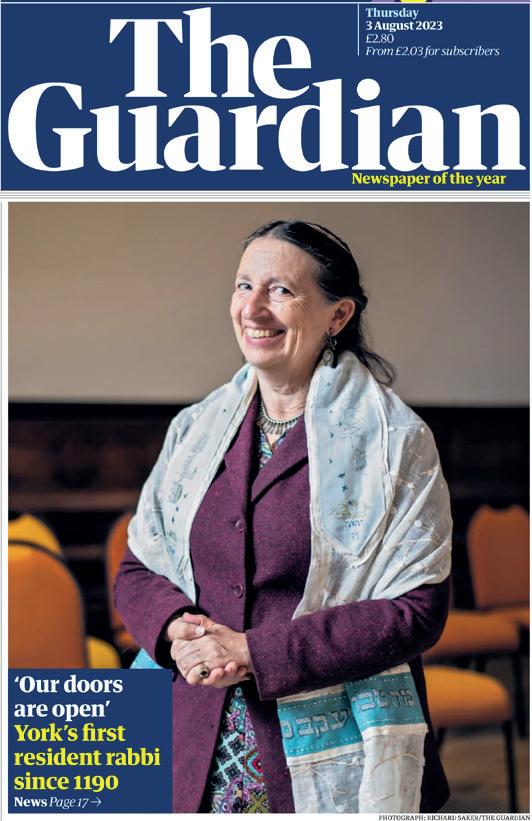

By Simon Rothstein and Graham Miller, Progressive Judaism Comms Team
In the coming months, we will be having intentional and meaningful conversations with each community’s leadership about the recommendations for the foundational elements of our new movement. One of those will be the name.
For this reason, we think it’s helpful to explain why we are using Progressive Judaism as a working title, to tell you where we have got to on naming and speak about how the right name can underpin a truly exciting and forward-looking movement.
The first recorded appearance of the term ‘progressive’ dates back to 1857 – just a short while after the founding of the first Reform synagogue in the UK, and almost a whole half century before the creation of Liberal Judaism.
That introduction came from Tobias Theodores, one of the most important figures in the history of early Reform Judaism. Writing in the Jewish Chronicle, about the split of his Manchester Reform Synagogue from the local Orthodox community, he said: “It will delight me and all who think with me to find both stabilitarian Judaism and progressive Judaism worthily represented in this city.”
The adjective stuck and, in 1926, was the obvious choice when the World Union for Progressive Judaism formed. As it approaches its 100th anniversary, the WUPJ remains the umbrella body (and umbrella name) representing all Liberal, Reform and Reconstructionist communities around the globe.
The work of social reformers Sir Basil and Lady Rose Henriques in the East End in the first half of
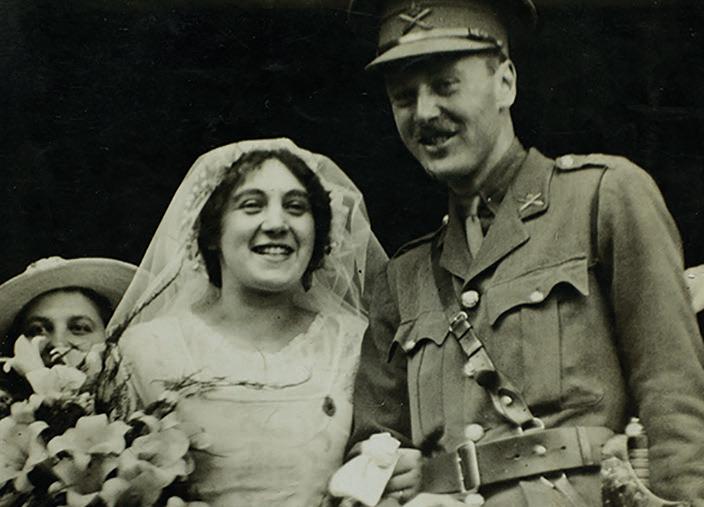
the 20th century further cemented the term into our Jewish lexicon. Basil Henriques – whose family were founder members of West London Synagogue – famously said: “We must not puzzle people by making them think that there are three forms of Judaism – the Orthodox, the Reform and the Liberal – when in fact there are only two, the Orthodox and the Progressive.”
In 1946, when Rabbi Dr Leo Baeck – the great German Reform leader who settled in London after the Holocaust – gave his seminal speech on rebuilding Jewish life in Europe, its title was ‘The Task of Progressive Judaism in the Post-War World.’
The history of Progressive since has seen it used most frequently as an umbrella term for Reform, Liberal and sometimes other forms of Judaism that are Progressive as opposed to Orthodox.
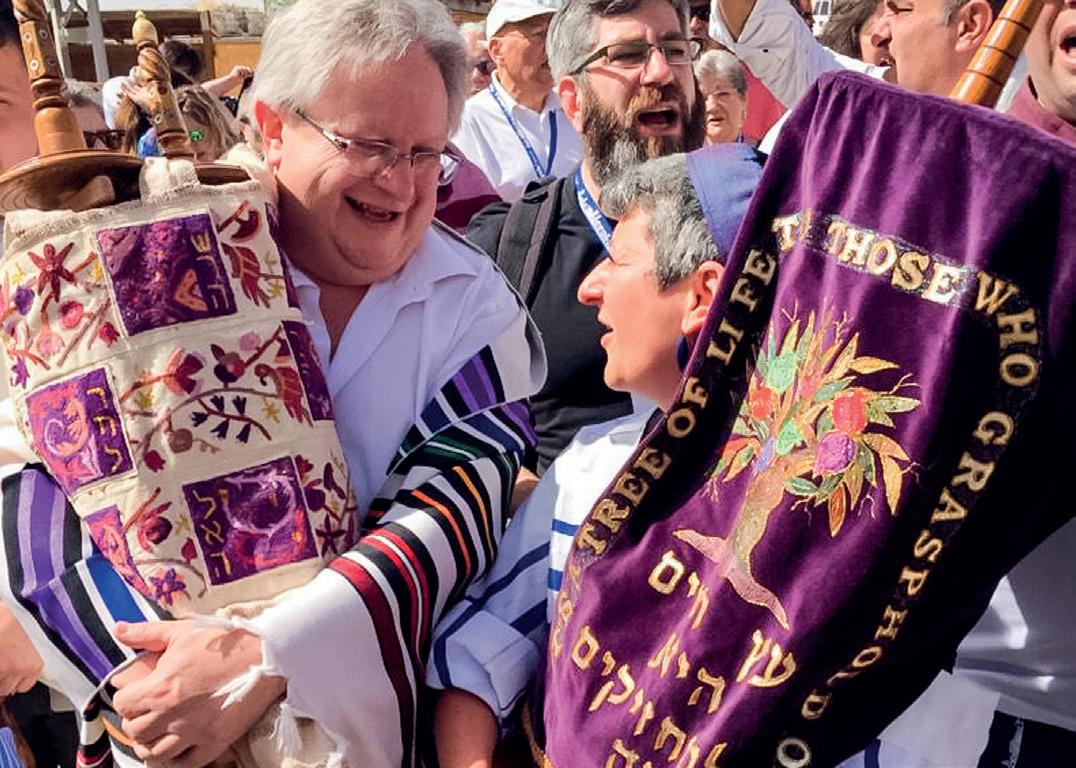
This is shown by all the joint Reform and Liberal projects that have adopted the ‘Progressive’ moniker. These have included the Council for Progressive Jewish Education (1944), the Federation of Progressive Synagogues (1946), Progressive Jewish Students (1971), the Eastern Counties Association of Progressive Synagogues (1984), Progressive Jews for Israel (1984), the Progressive Deputies Group on the Board of Deputies (2002) and, most recently, the Alliance for Progressive Judaism (2014).
One important final historical footnote – Liberal Judaism was previously called the Union of Liberal and Progressive Synagogues (ULPS). However, 22 years ago, they took the decision to rebrand as Liberal Judaism and drop the word Progressive, because, ironically, it implied they were made up of both Reform and Liberal communities.
What we have learnt so far
This ongoing exploration of naming has not just been an internal conversation, we have also been working with experienced brand consultants, who have previously created successful branding for an eclectic mix of organisations such as Colgate, Comic Relief, Marie Curie and LV=.
They have encouraged us to look at this with a more forward-looking and open mind. They helped us understand that getting this right is critical to providing a sense of meaningful change, indicating a revitalisation and development of our Judaism.
With their guidance, we have explored the pros and cons of using ‘Reform’ and ‘Liberal’ together in our name – but found it to be backward-looking and failing to signify change or reflect the character of a new singular movement.
Other options that have been considered include adopting a Hebrew name, as Masorti Judaism do, or sticking to a generic name, as the Orthodox have with the United Synagogue.
How ‘Progressive Judaism’ has taken on a life of its own
In our statement to our members and other stakeholders in April 2023, when we announced the
coming together of Reform and Liberal Judaism, we used ‘Progressive Judaism’ as a descriptor because it was the best and most widely understood term for what we are.
Over the last 18 months this descriptor has taken on a life of its own.
It was immediately and commonly coined by the media, and in turn used by important external stakeholders, including Government and other Jewish and faith organisations.
It took on a momentum that was impossible to stop – becoming one of those Ronseal moments, by doing ‘exactly what it says on the tin’. It has created valuable brand recognition and equity that we can ill afford to lose.
Consequently, and as you might expect, both Progressive Judaism and The Movement for Progressive Judaism are names we are considering.
We are also looking to see if we can go further and encapsulate the broader Jewish experience we offer our congregants – with a name such as The Movement for Progressive Jewish Life.
There might also be other great ideas still waiting in the wings, in which case we want to hear from you!
Our one-off opportunity to get it right Together, we now have a unique opportunity to create a contemporary, authentic, strong and sustainable alternative to Orthodoxy in our modern world – to provide Jews with a choice where equality, inclusivity and diversity are the hallmarks.
We are committed to searching for the best naming and branding solution. As we do this, we will continue to listen and learn from our members and to look at further options.
When we take our recommendations back to you, be assured it will be based on what we have learnt from you, our members, and will reflect the consensus view.
By Rabbi Josh Levy and Rabbi Charley Baginsky, Co-Leads
Having travelled the country listening to our communities, we believe that there is a willingness to move forward, and we are confident that we have a mandate to continue onto the next stage.
We know, too, that while there is an appetite for this project, it is subject to the detail, and that our membership is keen to know what happens next.
The broad picture is that we remain confident that there will be a recommendation to the two Boards of MRJ and LJ in the December of 2024 that they can best fulfil their charitable purposes by creating a new movement together and disbanding the existing entities. Our goal is that in the Spring of 2025 we will be able to bring this recommendation to the membership of the two movements. We will also be in a position over the coming months to advise communities of the legal process for the coming together, and the exact steps each community will need to take.
Once the two movement votes have taken place it will take 6-9 months to establish the new organisation, and we plan for this to be in place by the end of 2025.
Between now and the end of 2024, we will be presenting to the leadership of each community our recommendation for the financial model, the principles of the governance arrangements, and the membership agreement. There will be opportunities to discuss these and to feedback. Additionally, we will provide resources that will support communities in sharing the vision and core work of the new movement with their members.
This is a very complex process; not only are we bringing together two charities, but we are also
bringing together two membership organisations made up of membership organisations!
We know that for some people this will feel too fast; for others it feels too slow.
We hope that this booklet helps you, wherever you find yourself, to understand better all the complexities taking place while also allowing us to take stock and see just how much has already been achieved. While we believe wholeheartedly in all that one combined movement will make possible, we also want to take the time to hear from you, so we can move forward together.
One of our favourite questions from our forums has been, “What can we do to help this movement achieve its potential?” Here are some suggestions:
1. Talk to us – There is so much in our communal life to celebrate – please tell us all the things you are proud of about your community. Help us celebrate you and inspire the other communities around you.
2. Be proud of Progressive Jewish life – Let the world know we are here and help to build the recognition of the diversity of Jewish life in the UK. It is a special thing that we are making an impactwe need to celebrate this, including making a noise on social media.
3. Raise up our voices – If you hear anyone say that one voice, individual or organisation is speaking on behalf of the Jewish community in the UK, then challenge it – write to the broadcasters and newspapers, post on social media, and keep up the pressure to recognise all forms of Judaism in public life.
4. Learn about one another – We have had the amazing opportunity to see the beauty of Progressive Jewish life around the country. You can too. Visit other communities, big and small, Liberal and Reform, online and in person. Take part in services, activities and events you haven’t before. Start new conversations with new people. Enjoy all the great things about being a Progressive Jew and learn how much we share.
5. Feedback – Tell us when we get things wrong, but also please do not forget to tell us when we get things right.